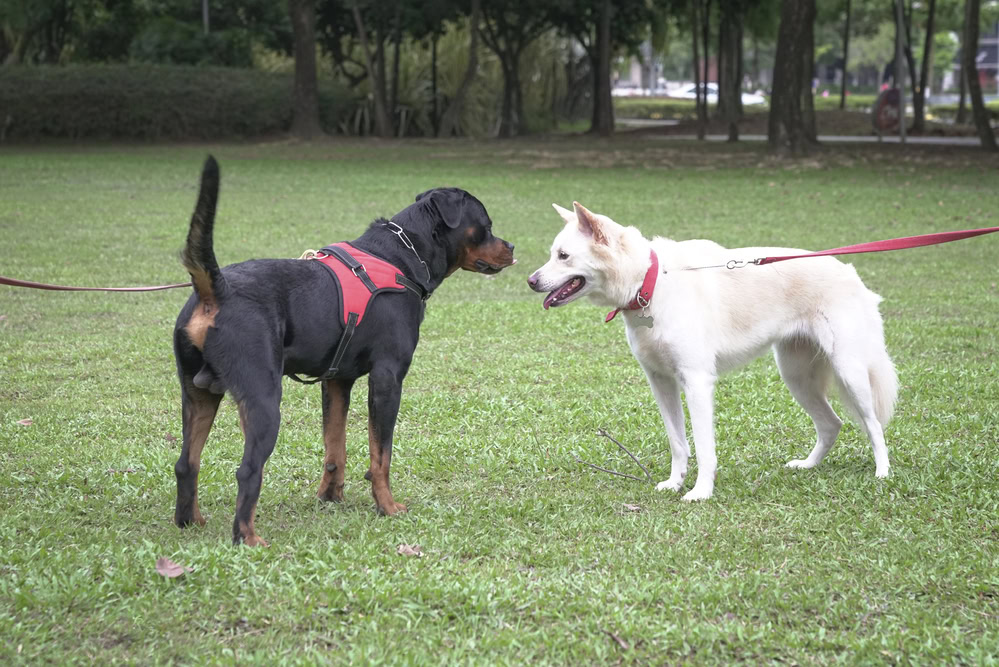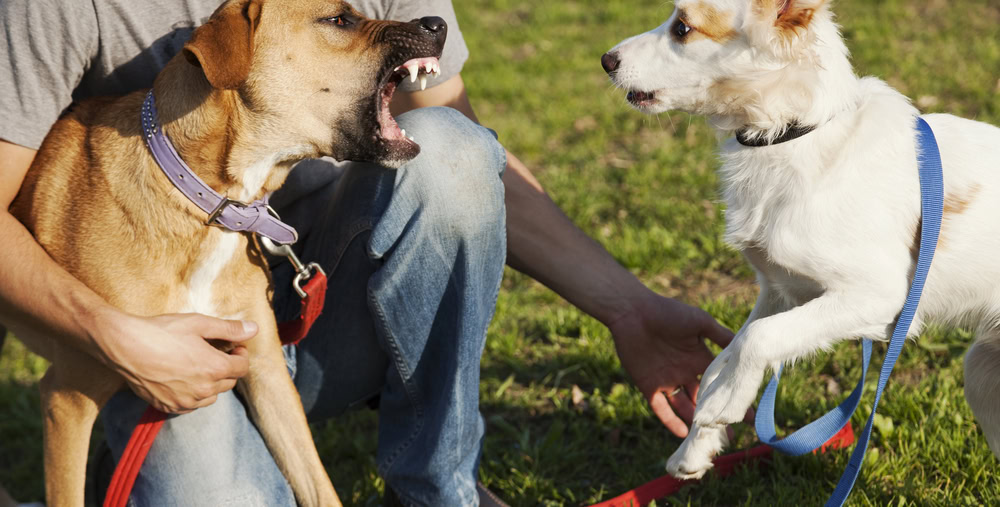For many dog owners, aggression can transform the joy of dog ownership into a daily challenge. Socialization, a dog training process of helping dogs become comfortable with various environments, people, and other animals, becomes particularly complex when dealing with aggressive dogs. Whether your furry friend shows aggression due to fear, past trauma, or lack of early socialization, there's hope for improvement with the right approach. This guide explores effective strategies to socialize an aggressive dog safely and successfully.

Socialization is much more than simply introducing your dog to other dogs and people. It's a comprehensive process of helping your dog learn to navigate the world with confidence rather than fear or aggression. For dogs with aggressive behavior, socialization means carefully controlled exposure to triggers in ways that create positive associations rather than reinforcing negative ones.
Proper socialization involves teaching your dog to remain calm and relaxed in various situations, from encountering strangers on walks to handling unexpected noises or visiting new environments. It's about building confidence and trust while gradually expanding your dog's comfort zone.
Many owners mistakenly believe that aggressive dogs should be kept away from all socialization opportunities to avoid problems. However, isolation often worsens aggression by increasing anxiety and fear while preventing positive learning experiences. Thoughtful socialization is essential because:
A well-socialized dog, even one with a history of aggression, can learn to navigate social situations with significantly less stress and reactivity.
Before beginning any socialization process, it's crucial to understand what triggers your dog's aggressive behavior. Common triggers include:
Watch carefully for early warning signs like stiffening body posture, raised hackles, whale eye (showing the whites of the eyes), or a fixed stare. Your dog may growl, snarl, or snap as the intensity escalates. By recognizing these triggers and early signs, you can intervene before full aggression occurs.
Many well-intentioned owners make critical errors that can worsen aggressive behavior:
Forcing interactions: Pushing your dog into overwhelming situations with the belief they'll "get over it" typically backfires, reinforcing the association between triggers and negative emotions.
Punishing warning signals: Punishing a dog for growling or showing other warning signs doesn't address the underlying emotion—it simply teaches dogs to suppress these warnings before biting, creating a more dangerous situation. You want to get the dog's attention or correct the dog before it gets to that point.
Inconsistent boundaries: Allowing behaviors sometimes but not others creates confusion that increases anxiety and frustration, which can trigger aggression.
Inappropriate exposure levels: Moving too quickly through the socialization process or exposing your dog to triggers at too high an intensity can cause setbacks and reinforce aggressive responses. Especially if you haven’t taught appropriate coping skills or haven’t done any obedience.
One negative experience can significantly set back your socialization efforts. When a dog becomes aggressive in a situation and the trigger retreats or you remove the dog, the aggressive behavior is inadvertently reinforced—your dog learns that aggression "works" to make scary things go away.
Furthermore, each negative experience strengthens the neural pathways connecting that trigger to fear and aggressive responses. This is why careful management and controlled exposures are essential—you're working to create new, positive pathways instead.
Habituation is the process through which dogs become accustomed to non-threatening stimuli through repeated exposure. For aggressive dogs, this might mean:
The key to successful habituation is keeping the exposure below the threshold that triggers a fear or aggressive response. Start with the trigger at such a distance or intensity that your dog notices it but remains calm, then very gradually increase exposure as your dog shows comfort.
Counterconditioning changes your dog's emotional response to triggers by pairing them with positive experiences. This technique is fundamental in rehabilitating aggressive dogs because it addresses the emotional root of aggression.
For example, if your dog becomes aggressive when seeing another dog, you would:
Through this process, your dog learns that the presence of the trigger predicts good things rather than threatening situations.
Desensitization involves gradually increasing exposure to triggers while maintaining a positive or neutral emotional state. This is combined with conditioning—teaching your dog alternative behaviors to replace aggressive responses.
For a successful desensitization and conditioning process:
Consistent practice helps your dog develop new neural pathways and behavioral responses to previously triggering situations.

When introducing your aggressive dog to other dogs, careful preparation is essential:
Choose the right helper dog—one that is calm, neutral, and non-reactive. An excitable or equally aggressive dog will likely trigger problems. Work with a trainer who has access to appropriate "neutral" dogs specifically trained for this purpose.
Start with parallel walking: Begin with both dogs walking in opposite directions with plenty of space between them. This allows them to become aware of each other without the pressure of direct interaction. Keep walking back and forth and gradually decrease the distance between them as both dogs remain calm. This can take multiple sessions over days or weeks.
Use barrier methods: Utilize secure fencing or other barriers that allow dogs to see each other without direct contact. This provides safety while allowing observation and counterconditioning.
Keep initial direct meetings brief: When dogs are ready for closer interaction, keep the first meetings very short (just a few seconds), call your dog back to you, praising and end on a positive note before either dog shows stress signals.
When working with dogs that show dominance-related aggression:
Remember that true dominance is about confidence and appropriate communication, not aggression. A well-socialized dominant dog can interact peacefully with other dogs through proper social signaling.
Building positive associations is key to successful dog-to-dog socialization:
Use structured activities like parallel walking or training exercises where both dogs are focused on their handlers rather than directly interacting. As comfort grows, allow brief, positive interactions, gradually increasing duration as both dogs remain relaxed.
Create controlled play sessions with compatible dogs, always ending before either dog becomes overstimulated. Some aggressive dogs do better with dogs of different sizes, ages, or energy levels—observe what works best for your individual dog.
Celebrate small victories—even if your dog simply remains calm in the presence of another dog without interacting, that's progress worth reinforcing.
Careful management is essential when introducing your aggressive dog to new people:
Prepare helpers in advance: Brief them thoroughly on how to behave around your dog—no direct eye contact, no reaching over the dog's head, no high-pitched excited voices, and no sudden movements.
Control the environment: Use leashes, barriers, or muzzles as needed for safety. Always give your dog enough space to feel comfortable, and never corner them.
Use the "treat and retreat" method: Have the person toss treats toward your dog without looking directly at them, then step back. This creates positive associations while respecting your dog's space. Your dog can approach at their own pace to retrieve treats.
Progress gradually: Start with the person sitting sideways to the dog at a distance, then over multiple sessions gradually decrease distance, add movement, add talking, and eventually progress to careful interaction as your dog shows comfort.
Your behavior significantly impacts your dog's socialization success:
Most importantly, be patient and realistic about your dog's progress. Some days will be better than others. Focus on the overall trend rather than any single interaction.
Consistency is key for lasting improvement. Create daily socialization opportunities at an appropriate level for your dog:
Remember that socialization is a lifestyle, not a one-time event. Integrating appropriate socialization opportunities into your daily routine creates lasting positive changes.
Safety must always be your top priority when socializing an aggressive dog:
Learning to read your dog's stress signals allows you to end sessions before aggression occurs:
It's better to end a session early with a positive experience than to push through and risk a negative outcome that sets back your training.
While many owners can make progress with their aggressive dogs, professional help is essential in these situations:
A professional dog trainer who specializes in aggression can create a customized plan, demonstrate techniques in person, and provide objective feedback on your progress. Look for trainers who have specific experience with the type of aggression your dog displays.
Setting realistic expectations helps maintain motivation through the socialization process:
Progress typically follows a pattern of improvement, plateau, and then further improvement. During plateaus, continue your consistent approach—these are often periods where learning is being consolidated before the next breakthrough.
Socializing an aggressive dog requires patience, consistency, and a commitment to understanding your dog's needs and triggers. While the process can be challenging, the reward of seeing your dog navigate the world with greater confidence and less fear is immeasurable.
Remember that progress may be measured in small increments: the first time your dog looks at you instead of lunging at another dog; the moment a stranger can toss a treat that your dog willingly takes; the day your dog chooses to move away from a trigger rather than growling. Celebrate these victories, as they represent significant shifts in your dog's emotional responses.
With appropriate techniques, safety precautions, and sometimes professional support, many aggressive dogs can learn to cope with previously triggering situations. The goal isn't necessarily to transform your dog into a social butterfly, but rather to help them develop the skills to navigate necessary interactions without stress or aggression.
At Alternative Canine Training, we've helped countless dogs overcome aggression since 2000 through methods that address the underlying causes while building positive associations and alternative behaviors. The journey of socializing an aggressive dog may be long, but the improvement in quality of life for both you and your furry friend makes every step worthwhile.